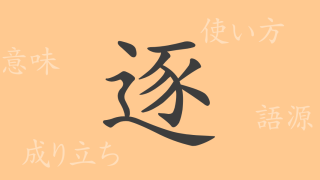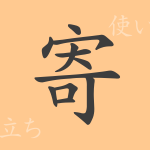The beauty of the Japanese language is reflected in its complex writing system. In this article, we will focus on one of the commonly used Kanji characters, “基” (き(Ki)), exploring its rich history and contemporary usage. We will uncover the abundant meanings and applications of this character, and how it is deeply rooted in Japanese language and culture.
The Origin of 基 (き(Ki))
The Kanji “基” (き(Ki)) originates from ancient China, composed of the character for land, “土” (つち(Tsuchi)), and “其” (そ(So)), which is generally translated as “that” and carries the meaning of indication. From this, “基” (き(Ki)) evolved to represent instructions or foundations related to land. Through the history and evolution of this character, we can catch a glimpse of how language has grown alongside culture.
Meaning and Usage of 基 (き(Ki))
The Kanji “基” (き(Ki)) carries meanings like “foundation,” “basis,” and “fundamental,” and is used to express the base or groundwork of something. For example, “基本” (きほん(Kihon)) refers to the fundamental principles or tenets underlying a matter, while “基礎” (きそ(Kiso)) means the foundation of a building or the elementary parts of a discipline or skill. Thus, “基” (き(Ki)) is an essential Kanji used across a wide range of fields to denote the foundation or starting point, from physical entities to abstract concepts.
Readings, Number of Strokes, and Radical of 基 (き(Ki))
How is the Kanji “基” (き(Ki)) read in Japanese, and what are its characteristics?
- Readings: The Onyomi (Chinese reading) is “キ” (Ki), and the Kunyomi (Japanese reading) are “もと” (Moto) and “もとい” (Motoi).
- Number of Strokes: “基” (き(Ki)) has 11 strokes in total.
- Radical: The radical of this Kanji is “土” (つち(Tsuchi)), which is associated with characters meaning the ground or earth.
Idioms, Phrases, and Proverbs Using 基 (き(Ki)) and Their Meanings
There are numerous idioms and phrases that include “基” (き(Ki)), enriching the expressions of the Japanese language. Here are a few examples:
- 基本 (きほん(Kihon)) – Refers to the fundamental principles or tenets of something.
- 基礎 (きそ(Kiso)) – Denotes the foundation or the basics upon which something is built.
- 基軸 (きじく(Kijiku)) – Represents the central axis or main part that supports something.
- 基点 (きてん(Kiten)) – Means the starting point or the basis for comparison.
- 基盤 (きばん(Kiban)) – Refers to the foundation or base that supports something.
Conclusion on 基 (き(Ki))
The Kanji “基” (き(Ki)), as evident in its usage, is an extremely important character that signifies the foundation or starting point of things. Its role in the Japanese language transcends mere writing, forming the basis of culture and thought. By understanding this single character, we can touch the deeper layers of the Japanese language and pursue richer expressions. As a commonly used Kanji, “基” (き(Ki)) will continue to support the fundamentals of Japanese language and culture.

























